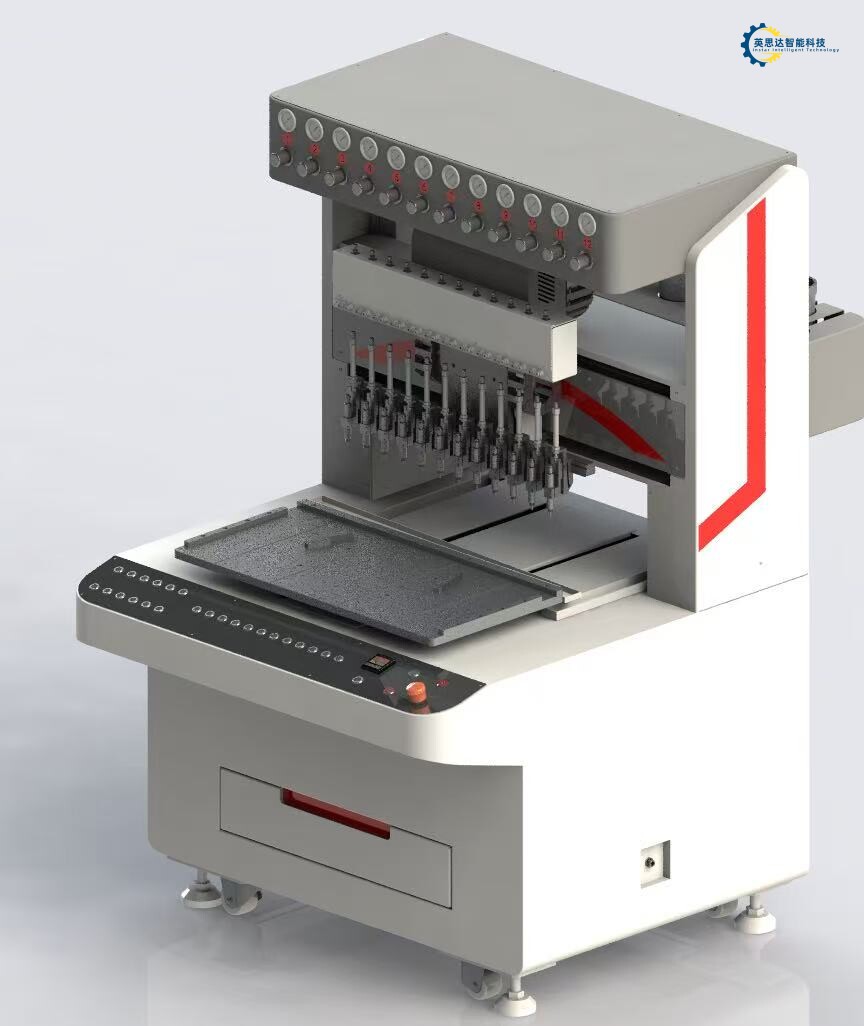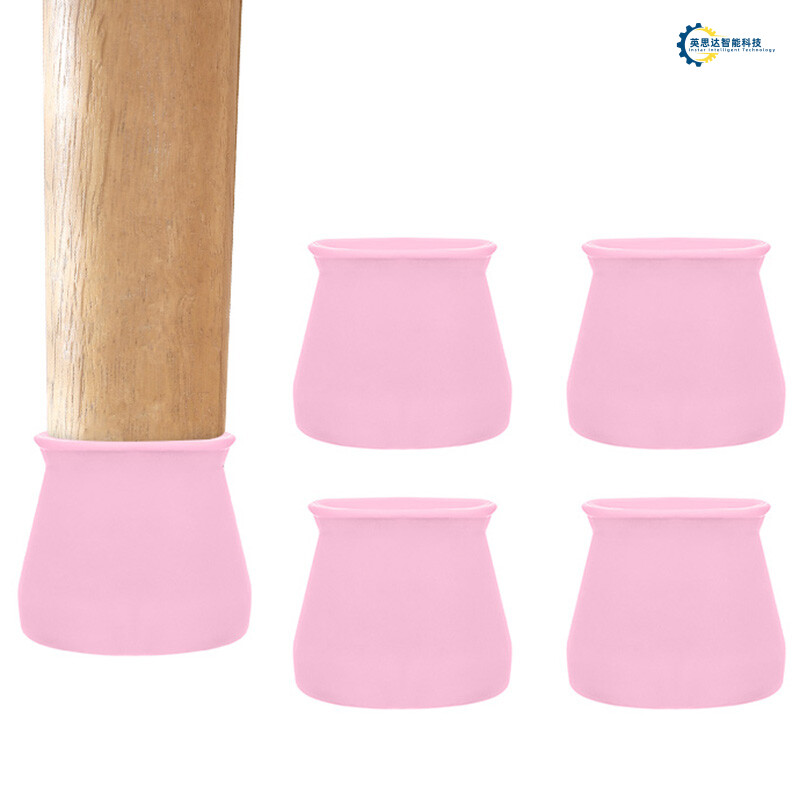Key Takeaways
Imagine your T-shirt embossing machine as the overachieving intern who never sleeps, drinks coffee intravenously, and finishes tasks before you finish saying “deadline.” These automated marvels don’t just boost efficiency—they yeet inefficiency into the sun. With dual workstation tech, it’s like cloning your best employee, but without the awkward HR paperwork. One machine handles designs while the other preps the next batch, doubling output faster than a TikTok trend goes viral.
Precision heat transfer isn’t just science—it’s sorcery. Think of it as a tiny dragon breathing fire onto your shirts, crafting 3D logos so crisp they could win a staring contest. And thanks to PID control systems, temperature swings are rarer than a quiet day in a toddler’s playroom. No more “oops, the design melted” moments—just consistent, high-quality prints that’ll make your customers swoon like they’re in a rom-com.
Oh, and let’s talk energy efficiency. These machines sip power like a hipster sipping artisan kombucha, slashing costs while Mother Nature gives you a thumbs-up. Combine that with 40% faster cycles, and you’ve got a production line that outruns procrastination itself. Whether you’re printing 10 shirts or 10,000, eco-friendly silicone transfers keep things greener than a kale smoothie. Who said saving the planet couldn’t be hilarious?

Automated Embossing Machines Revolutionize Apparel
Picture this: a factory floor where automated embossing machines work harder than a caffeinated intern during fashion week. These mechanical marvels are flipping the script on traditional apparel production faster than you can say, “Wait, did that T-shirt just print itself?” By swapping manual labor for precision robotics, manufacturers are now churning out custom designs like a bakery pumps out donuts—except these donuts have 3D logos that pop so hard, they might just start a trend.
“Think of these machines as the Swiss Army knives of apparel decor—they’ve got a tool for every job, and they never ask for a lunch break.”
The secret sauce? Dual workstation setups that let operators load one batch while the machine stamps another. It’s like having two left hands, but in a good way. And thanks to PID temperature control, these gadgets maintain heat levels more consistently than your grandma’s oven—no more half-baked logos or melted fabric disasters.
But here’s the kicker: while humans might fumble with coffee spills or Monday morning grogginess, these machines deliver identical results every. Single. Time. Whether it’s the 1st shirt or the 10,000th, the silicone molds press with the kind of accuracy that’d make a math teacher weep with joy.
Pro tip: If your machine starts humming your favorite ’80s synth-pop hit, don’t panic—it’s just celebrating another flawless batch.

Dual Workstation Technology Doubles Output
Imagine a T-shirt embossing machine that works like a caffeinated octopus with two sets of arms—because why settle for one workstation when you can have two? Dual workstation technology isn’t just fancy jargon; it’s the secret sauce that turns your production line into a synchronized dance party. While one station presses a crisp 3D logo onto a tee, the other is already lining up the next victim—er, garment. No more awkward waiting around like a wallflower at prom.
Here’s the math even your high school algebra teacher would high-five:
| Single Workstation | Dual Workstation |
|---|---|
| 1 shirt every 30 seconds | 2 shirts every 30 seconds |
| Operator naps: frequent | Operator naps: extinct |
| Coffee breaks: mandatory | Coffee breaks: optional (for humans, not machines) |
| Robot dance moves: basic | Robot dance moves: full-on disco |
This tag team of heat-pressing glory slashes idle time faster than a toddler demolishing a cookie jar. The machines don’t argue over who’s doing more work—they’re too busy high-fiving with robotic arms (metaphorically, of course). Plus, with dual stations, you’re not just doubling output; you’re halving the chances of your production manager developing a nervous twitch.
And let’s talk about the conveyor belt ballet. Shirts glide in, get stamped, and twirl out like they’re auditioning for Swan Lake. Meanwhile, the PID temperature control ensures the heat plates don’t throw a tantrum—consistency is key, unless you’re into lopsided logos that look like they survived a microwave explosion.
In short? Dual workstations are the dynamic duo your factory never knew it needed. Batman and Robin? More like Pressmaster 3000 and Pressmaster 3000’s cooler twin. Now, if only they could fix the office coffee machine…
Precision Heat Transfer Ensures 3D Logo Quality
Imagine your favorite band’s logo on a T-shirt looking flatter than a pancake dropped by a sleep-deprived college student. Not exactly merch-worthy, right? Enter precision heat transfer—the superhero of the embossing world, armed with thermal accuracy that would make even a picky pastry chef nod in approval. This tech doesn’t just press designs; it marries them to fabric with the finesse of a rom-com meet-cute.
How? Think of it as a 3D logo quality ninja. The machine applies heat so precisely, it’s like giving each thread a tiny spa day—steamy enough to relax the fibers but not so hot they start writing angry Yelp reviews. The result? Logos pop like popcorn in a microwave, with crisp edges and depths that could hide your car keys.
Here’s the kicker: this isn’t your grandma’s iron-on patch situation. Modern T-shirt embossing machines use sensors smarter than a trivia night champion to maintain perfect temperature balance. No more melted designs resembling modern art gone wrong. Consistency is key, and these machines are basically the Mozart of repetition—hitting the same high note every. Single. Time.
But wait, there’s science! The heat transfer process bonds specialty films or silicone layers to the fabric, creating textures so tactile, even your cat might pause mid-nap to admire them. And because the machine’s got the patience of a saint, it ensures every shirt in the batch looks like it rolled off a luxury production line—not a rushed DIY project.
So, next time you see a shirt with a logo that screams “touch me,” thank precision heat transfer. It’s the unsung hero turning bland cotton into wearable masterpieces, one perfectly toasted design at a time. (And no, it doesn’t even need a coffee break.)
PID Control Systems Optimize Temperature Accuracy
Let’s talk about the PID control system—the unsung hero of T-shirt embossing that’s basically the Goldilocks of temperature regulation. Imagine a machine that’s pickier than a barista about your latte’s foam consistency. PID controllers (that’s Proportional-Integral-Derivative, for the acronym-obsessed) are like a grumpy chef constantly adjusting the oven to avoid burning your cookies. Too hot? Your shirt becomes a crispy fashion disaster. Too cold? The design peels off faster than a bad sticker. But with PID magic, the machine whispers sweet nothings to the heating elements, maintaining precision within ±1°C—because even embossing machines deserve drama-free relationships.
Why does this matter? 3D logos demand perfect heat transfer. A PID system doesn’t just “wing it” like your cousin’s DIY craft project. It calculates past errors, predicts future ones, and adjusts in real-time, like a psychic with a soldering iron. The result? No more “oops, the dragon logo now looks like a soggy noodle.” Plus, energy-efficient operations mean the machine isn’t guzzling power like a teenager on a Netflix binge. It’s the difference between a zen master and a panicked intern—saving energy, time, and your sanity.
So next time you see a flawlessly embodied shirt, thank the PID control systems quietly winning the thermostat wars. They’re the reason your brand’s logo stays sharper than a stand-up comedian’s punchlines—without breaking a sweat. Or a circuit.
Energy-Efficient Designs Cut Operational Costs
Let’s talk about the T-shirt embossing machine’s secret superpower: being a cheapskate. Imagine a machine that guzzles energy like a college student downs coffee during finals week—except this one sips power like it’s a fancy herbal tea. Modern energy-efficient designs are the unsung heroes of the apparel world, slashing bills faster than a toddler with safety scissors. How? By using PID temperature control systems that act like a hyper-vigilant thermostat mom. These systems don’t just “set and forget”—they micromanage heat levels with the precision of a cat watching a laser pointer, ensuring no watt goes to waste.
But here’s where the magic happens: dual workstation technology isn’t just doubling output; it’s cutting energy per shirt by sharing heat like coworkers stealing fries. Think of it as carpooling for thermal energy. Meanwhile, eco-friendly silicone transfers laugh in the face of old-school, power-hungry methods, sticking logos on shirts without the carbon guilt. And let’s not forget automated cycles that finish jobs quicker than a TikTok trend, reducing idle time (and your electricity meter’s panic attacks).
Bottom line? These machines aren’t just saving the planet—they’re saving your wallet from becoming a cautionary tale. Who knew being green could also mean rolling in green?
40% Faster Production Cycles With Automation
Picture this: a T-shirt embossing machine that works faster than a caffeinated squirrel on a sugar rush. Automation isn’t just about replacing humans—it’s about giving your production line a jetpack. Traditional methods? They’re like watching paint dry while your competitor’s machine zooms past, leaving a trail of perfectly embossed shirts. With dual workstation technology, these gadgets don’t just multitask—they hypertask. One arm slaps down a fresh tee while the other presses a 3D logo so crisp, it could win a beauty pageant.
But wait, there’s more! PID temperature control isn’t just a fancy acronym—it’s the machine’s inner perfectionist, micromanaging heat levels like a grandma checking the oven every 30 seconds. No more “oops, the design melted into abstract art” moments. And because these machines run smoother than a disco ball at a ’70s party, cycle times drop by 40%. That’s enough time to brew a pot of coffee, call your mom, and still hit your quota before lunch.
Best part? The automation doesn’t just speed things up—it turns your production floor into a well-oiled comedy sketch. Imagine shirts flying through like they’re late for a meeting, while the machine hums along, utterly unbothered. Efficiency has never been this chaotic… or this profitable.

Consistent Results in High-Volume T-Shirt Printing
Imagine trying to frost 10,000 cupcakes with a butterknife while blindfolded. That’s what high-volume T-shirt printing used to feel like before automated embossing machines showed up. These mechanical wizards don’t just avoid turning your favorite band logo into a melted Picasso—they deliver crisp 3D designs faster than a caffeine-addicted cheetah. How? By treating heat and pressure like a perfectly choreographed TikTok dance.
While humans might get distracted debating whether pineapples belong on pizza, PID-controlled systems keep temperatures locked tighter than your grandma’s secret cookie recipe. No more “oops, that shirt now smells like burnt regrets.” Even when cranking out thousands of units, silicone transfer plates work harder than a Roomba in a glitter factory, ensuring every logo pops with the precision of a mic drop.
And let’s talk consistency. These machines don’t “phone it in” after lunch break. Whether it’s shirt #1 or #10,001, the embossing pressure stays as reliable as that one friend who always brings snacks. The result? Bulk orders that look like they were crafted by clones of Da Vinci—if Da Vinci wore graphic tees and owned a glue gun. Who knew robots could be this good at making fashion statements without accidentally starting a glitter apocalypse?
Eco-Friendly Silicone Transfer Solutions Explained
Let’s talk about saving the planet, one T-shirt at a time—because who said eco-warriors can’t look fly in a 3D logo tee? Modern silicone transfer solutions are like the superheroes of apparel decor, swapping toxic adhesives and vinyl waste for materials that Mother Nature would actually high-five. Imagine a heat transfer process so clean, it’s basically the yoga instructor of the printing world: flexible, precise, and downright zen.
Here’s the kicker: these eco-friendly transfers use silicone-based inks that cure faster than a teenager’s attention span. No more fumes that smell like a chemistry lab’s bad hair day. Instead, they bake into vibrant, durable designs at lower temperatures—saving energy like a grandma unplugging every appliance in the house “just in case.” And because the silicone bonds like glue (but, you know, non-toxic glue), you get consistent results without the environmental guilt trip.
But wait, there’s more! Unlike traditional methods that leave enough waste to fill a landfill-themed T-shirt collection, silicone transfers produce scraps so minimal, they’re practically invisible—like socks lost in the laundry. Plus, the reusable carriers mean fewer resources go poof into the void. So, while your competitors are still wrestling with outdated, planet-punishing techniques, you’ll be over here printing tees so green, they’re basically photosynthesis-ready.
Next up: How to convince your boss that “saving the world” counts as a valid line item in the budget. Spoiler: energy-efficient designs and 40% faster cycles help. A lot.
Conclusion
So, here we are—the grand finale where T-shirt embossing machines transform from clunky metal boxes into the unsung heroes of your production line. Think of them as the caffeine-fueled interns who never sleep, except these don’t demand pizza Fridays or complain about Wi-Fi. By now, you’ve seen how automated assembly lines swap human-error hiccups for laser-focused precision, turning “oops” into “oh yeah!” every time.
Let’s not forget the dual workstation wizardry—like having two chefs in a kitchen, except these chefs never argue over who burnt the soufflé. Throw in PID temperature control, which works harder than your office thermostat during a heatwave, and suddenly, even the fussiest 3D logos behave like well-trained golden retrievers. And hey, slicing cycle times by 40%? That’s basically giving your production schedule a jetpack.
Sure, energy-efficient designs might not sound thrilling, but imagine your utility bills doing a happy dance. Plus, eco-friendly silicone transfers mean Mother Earth nods approvingly while your brand stays squeaky-clean. So, whether you’re printing 10 shirts or 10,000, these machines are like that one friend who always shows up with snacks—reliable, efficient, and weirdly good at saving the day. Now go forth, and may your T-shirts be ever embossed! 🚀
Frequently Asked Questions
Q: Will a T-shirt embossing machine turn my cat into a factory supervisor?
A: While automated embossing machines handle 90% of the work, your cat’s promotion to “Chief Napping Officer” remains optional. These devices focus on 40% faster production cycles, leaving feline management entirely up to you.
Q: Can I use this machine to print “3D pizza” on a shirt?
A: Sadly, no. The precision heat transfer tech specializes in high-quality 3D logos, not edible art. But hey, a pepperoni-shaped emblem? That’s negotiable with the right design file.
Q: Do I need a PhD to operate the PID temperature control?
A: Fear not! The PID control system is smarter than a GPS in a corn maze. It auto-adjusts temperature accuracy so precisely, even your coffee maker would get jealous.
Q: Will my energy bill look like a rocket launch?
A: Only if you’re launching savings! Energy-efficient designs slash costs faster than a toddler fleeing bath time. Think lower bills and happier accountants.
Q: Can it handle my obsession with neon dinosaur logos?
A: Absolutely. Dual workstation technology laughs at high-volume orders. Feed it 100 dino shirts, and it’ll spit ’em out quicker than a T-Rex chasing a snack.
Ready to Turn Your T-Shirt Chaos into Embossing Magic?
Click here to chat with our rubber-wizard team—no magic spells required, just great machines! 🧙♂️
